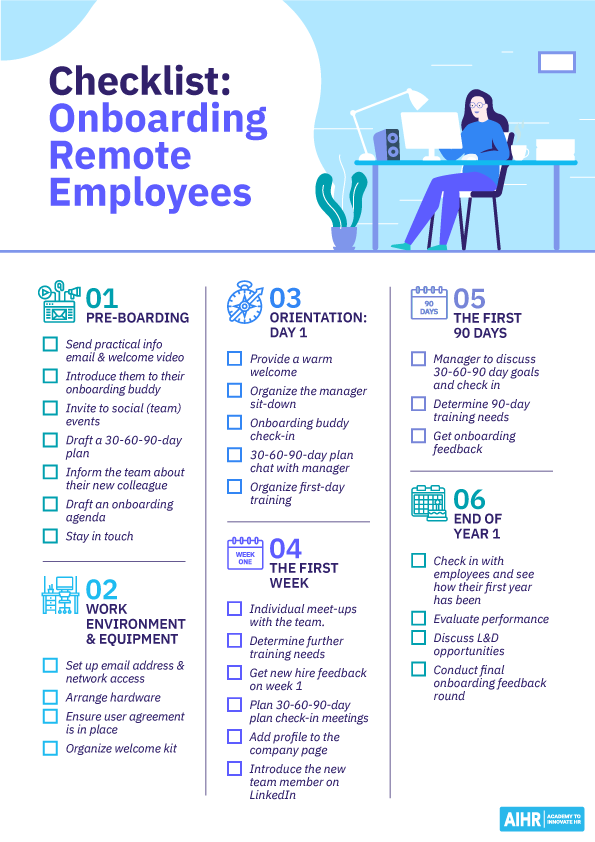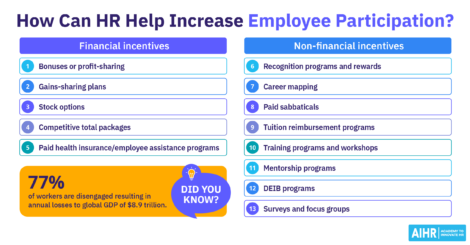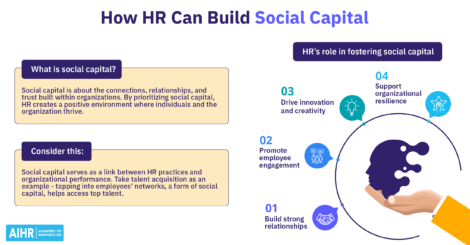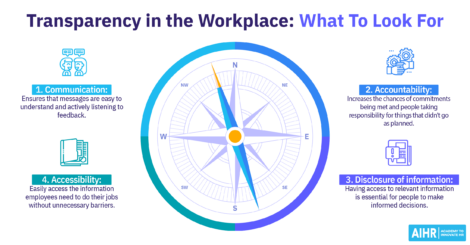Your Actionable Guide For Remote Onboarding In 2024 (+ Free Checklist)

Set your new employees and your organization up for success with a well-designed remote onboarding process. This crucial stage lays the foundation for a healthy and lasting employee-employer relationship.
This comprehensive guide will provide practical steps for HR professionals to create a successful remote onboarding process, complete with a convenient checklist. Let’s dive in!
Contents
What is remote onboarding?
The challenges of remote onboarding
Free remote onboarding checklist
How to successfully onboard remote employees
Case Study: GitLab’s remote onboarding process
What is remote onboarding?
Remote onboarding is the process of familiarizing new hires with the organization, its people, and its culture. It differs from traditional employee onboarding because, as the term suggests, it takes place fully remotely.
As remote work has surged since the pandemic began in 2020, traditional onboarding methods no longer suffice. A study by McKinsey from spring 2022 found that in the US, 35% of employees had the option to work from home full-time while 90% were able to work under a hybrid model.
In Europe, the numbers vary per country. Data from Eurostat and Statist show that in 2022, 30% of workers regularly worked from home. The Netherlands, however, is way ahead of other countries, with 65% of the population working remotely at least part of the time, while in, for instance, the UK, this is just over 15%.
When it comes to onboarding new employees, this rise in remote working – especially when it’s full-time – asks for a different approach.
The challenges of remote onboarding
Remote onboarding presents unique challenges for HR professionals. While some challenges overlap with traditional onboarding, others are specific to remote employees. Here are the main challenges to consider:
- Communication: Remote communication requires thoughtful consideration of channels and methods to ensure engagement, clarity, and a strong employee-employer relationship.
- Culture: Translating organizational culture to remote employees and providing them with an accurate impression of the company becomes more challenging without a physical workspace.
- Connection: Integrating new hires into the team is harder without casual encounters. Assigning an onboarding buddy becomes crucial for facilitating connections.
- Manager: Managers with little or no experience managing remote teams may struggle to effectively onboard remote employees. Understanding the unique considerations of remote management is essential.
Free remote onboarding checklist
How to successfully onboard remote employees
In this section, we’ll outline the steps HR professionals can take to successfully onboard new remote employees. Each step addresses specific challenges:
Step 1: Develop an onboarding plan
Follow the same structure as traditional onboarding, including five main stages:
- Preboarding period: Engage new hires between signing the offer letter and their first day on the job.
- First day: Create a memorable and positive experience for new hires.
- First week: Help new hires get acquainted with the team, company, and role.
- First 90 days: Develop a 30-60-90 day plan to ensure effective integration and value addition.
- First year: Evaluate performance and discuss future prospects at the end of the first year.
Let’s take a closer look at each of these stages.
1. Preboarding
Preboarding is essential to keep a new hire engaged during the period in which they have signed the contract, but not yet started working. Perhaps even more so when it involves a remote role as there probably hasn’t been an in-person meeting with the manager and the team.
Here’s a checklist to ensure a smooth preboarding experience:
- Send a practical info email and welcome video: Customize your ‘welcome to the team‘ email to provide essential information about equipment, remote work allowances, logins to company systems, and contacts for IT and HR questions. Also, inform them about the onboarding buddy program if your company offers this.
- Personalized welcome video: Depending on your organization’s size, create a short video from company founders and/or the new hire’s manager and team, offering a warm welcome and introduction.
- Introduce the onboarding buddy: Connect the new hire with their onboarding buddy, who will reach out to them, establish a connection, and foster a sense of company culture.
- Invite to social events: Help new employees familiarize themselves with the team and company culture by inviting them to virtual social events. Take inspiration from companies like Drift, who organize engaging online gatherings for all employees.
- Invite to professional events: If there are relevant industry events happening during the preboarding period, consider inviting the new hire to participate.
- Draft a 30-60-90-day plan: Provide clarity on the new hire’s responsibilities and performance expectations by creating a comprehensive plan.
- Inform the team: Ensure the team is aware of their new colleague and encourage them to send welcoming messages or videos. This is especially vital in a remote setting.
- Draft an onboarding agenda: Share a detailed agenda with the new hire, outlining their first day and week. Include meetings with team members, company presentations, and discussions with managers and HR.
- Stay in touch: Regularly check in with the new hire and encourage them to ask questions. Maintaining open communication during preboarding is crucial for their integration and success.
2. Day One: Orientation
Day one, the job orientation, is more about the experience than about the information. As we said earlier, this day should be about creating a memorable, positive experience for new hires to look back on.
Here are some key things to focus on for day one:
- Warm welcome (connection and culture): Since we’re onboarding remote employees, creating a warm welcome online is important. Consider starting the day with a team introduction, where everyone can meet each other virtually. Team traditions, like sending a welcome box with a personalized mug, can make the experience even more special.
- Manager sit-down: The new hire should have a virtual meeting with their manager to go through the agenda for the day. This is also an opportunity for the new hire to ask any questions they may have.
- Onboarding buddy (connection and culture): Assigning an onboarding buddy is crucial to successful remote onboarding. This person will offer support, help the new hire navigate the virtual workplace, and familiarize them with company processes, culture, and benefits.
- 30-60-90-day plan (communication and manager): On day one, the manager should introduce the new hire to their 90-day plan. This ensures that the new hire understands their responsibilities and what to expect. During this meeting, the manager can also share the new employee’s weekly and monthly schedules. This could include daily or weekly team meetings, a monthly business update, and a quarterly in-person team day.
- Training (communication and culture): Remote training requires additional planning. Consider having someone from the IT department available to assist new hires during their training sessions. Additionally, new employees should complete training on communication and collaboration software, email usage, and any other software relevant to their role. The onboarding buddy can also provide guidance in this area.
3. The first week
In the first week, new hires focus on getting familiar with their team, the company, and their role. Here are three key things to consider:
- Connecting with the team: During their first week, new hires have individual meetings with their colleagues to build relationships and understand how they will collaborate.
- Manager check-ins: Managers should touch base with new hires at least once a day (preferably twice in a remote environment) to ensure everything is going well, address any questions, and identify areas for improvement.
- Further training: Remote employees often work with complex software tools and systems, so thorough training must be provided during the first week. IT support should be available to assist with any technical issues.
The new hire’s onboarding buddy also plays a crucial role during this week. They provide a comfortable space for new hires to ask questions and express any concerns or thoughts.
4. The first 90 days
By the end of the first 90 days, new hires should be fully integrated into the team, company culture, and performing their role effectively. The 30-60-90 day plan is ideal for successfully achieving this.
In a remote setting, training becomes especially important during the new hire’s first 90 days. The type of training may vary depending on the role, but examples include instructor-led learning, e-learning, on-the-job training, and mentoring.
5. The first year
Wrap up the first year with a final meeting to conclude the onboarding process and conduct the first performance review. Cover 4 key areas in this meeting.
- Practicalities: Confirm that all practical matters have been handled since the onboarding process started.
- Performance: Evaluate the performance of new employees and assess their progress toward achieving their goals.
- Future: Discuss learning and development opportunities, inquire about their career aspirations, and explore their future within the organization.
- Feedback: Gather feedback on the remote onboarding process. Determine what has been successful and identify areas for improvement.
Step 2: Evaluating remote onboarding success
Poor onboarding can lead to unwanted turnover. By implementing onboarding metrics, you can:
- Identify any issues in your remote onboarding process
- Improve the effectiveness of your onboarding program
- Prevent unwanted turnover
Here are some metrics you can track:
- Time to productivity: Measure how long it takes for a new hire to become operational and productive.
- New hire turnover: Track the number of employees who leave within the first year or a defined time period.
- Retention threshold: Determine the point at which new hires exit the organization.
- Onboarding satisfaction: Gauge the sentiment of new employees after a specific period of time.
- New hire retention rate per manager: Identify any potential issues within specific teams.
- Training completion rate: Monitor how many new employees have completed their training.
- 360-degree feedback: Gather insights from those who interact with new hires to assess the effectiveness of your remote onboarding program.
- Informal feedback: Ask new joiners open-ended questions to assess their satisfaction level.
For a more in-depth exploration of these metrics and others, check out our article on onboarding metrics.
Step 3: Get ready for remote onboarding
Before diving into remote onboarding, it’s important to be fully prepared. While this step may come later in the process, it’s crucial to have everything in place for a smooth transition. Here are a few key factors to consider:
- Tech requirements: Collaborate with your IT department to assess the technology needs for remote onboarding. They’ll have knowledge of what is currently available and what may need to be implemented.
- IT Support: IT support is essential in a remote environment. During your meeting with the IT team, discuss the support needed for new hires. Determine when IT should be available to assist and ensure everyone knows who is starting when.
- Onboarding buddies: A successful remote onboarding process often includes an onboarding buddy program. Set up this program before onboarding so new hires can be paired with their buddy right from the start.
- Metrics: It’s important to establish the metrics that will be used to evaluate the success of your remote onboarding process. This will help HR and the organization track progress and make any necessary adjustments.
By taking these steps to prepare, you’ll be well-equipped and ready to confidently tackle remote onboarding.
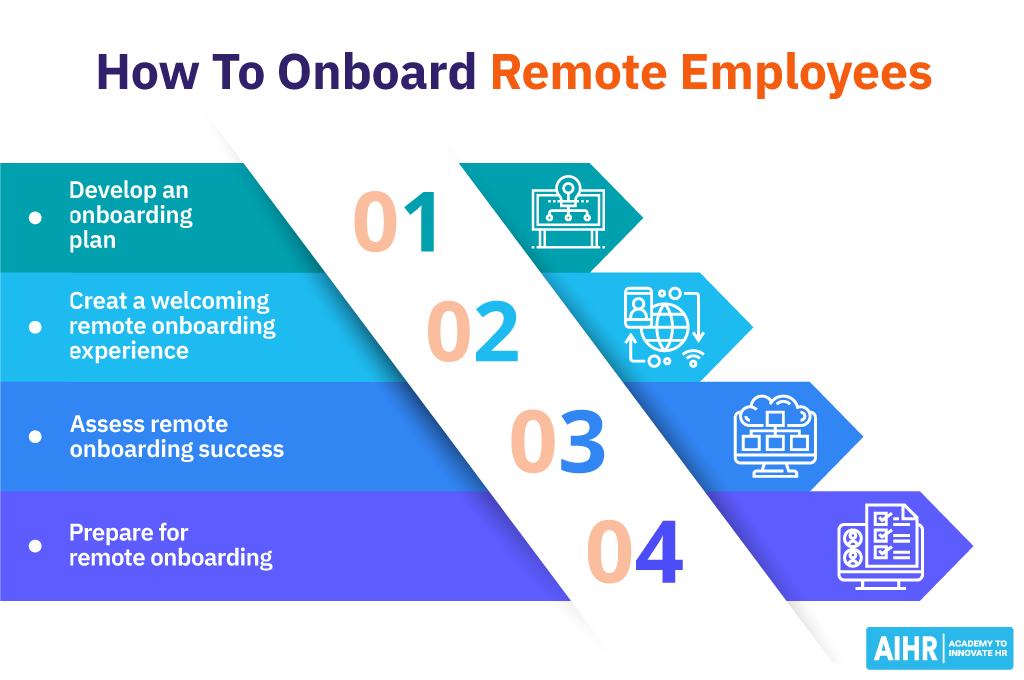
Case Study: GitLab’s remote onboarding process
GitLab has created a main page that provides a clear and informative overview of the onboarding process at the company. It includes links to additional onboarding pages and templates for new employees.
Newcomers can find information about GitLab’s TaNewKi call, a preboarding call where they can meet future colleagues, socialize, and ask questions.
The page also provides an overview of the relevant Slack channels to which new people team members will be added. Additionally, there is a list of relevant links for sales team onboarding, developer onboarding, and more.
What sets this page apart is its flexibility. New hires can go through it at their own pace and whenever it’s most convenient for them.
To sum up
As the number of people working remotely continues to rise, it becomes increasingly important to have a robust remote onboarding process in place. This requires HR professionals to rethink their approach to onboarding. The steps discussed in this article serve as a valuable starting point for creating a successful remote onboarding experience.
Weekly update
Stay up-to-date with the latest news, trends, and resources in HR
Learn more
Related articles
Are you ready for the future of HR?
Learn modern and relevant HR skills, online





